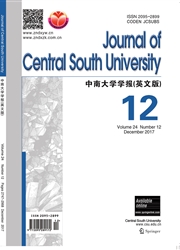

 中文摘要:
中文摘要:
一个控制分配算法为独立地开车的四台在里面车轮马达和有四轮的 steering-by-wire 的过去激活的系统基于伪逆方法被建议电的车辆以便改进车辆稳定性。控制算法用 two-degree-of-freedom (DOF ) 被开发车辆模型。假控制向量被一个滑动模式控制器计算最小化之间的差别需要并且实际车辆运动。一个伪逆控制器然后分配了包括了驾驶转矩并且根据假控制向量驾驶四个车轮的角度的控制输入。如果至少一个致动器被浸透或在失败说,控制输入被算法重新分配。算法被使用 8-DOF 在 Matlab/Simulink 评估非线性的车辆模型。正弦曲线输入演习和两倍小巷变化的模拟调遣被执行,结果与为滑动模式控制的那些相比。车辆由控制分配算法控制了的模拟结果表演比滑动模式控制控制的车辆有更好的稳定性和追踪轨道的性能。当至少一个致动器被浸透时,分配算法仍然有好处理和稳定性的控制或处于一种失败状况控制的车辆。
 英文摘要:
英文摘要:
A control allocation algorithm based on pseudo-inverse method was proposed for the over-actuated system of four in-wheel motors independently driving and four-wheel steering-by-wire electric vehicles in order to improve the vehicle stability. The control algorithm was developed using a two-degree-of-freedom(DOF) vehicle model. A pseudo control vector was calculated by a sliding mode controller to minimize the difference between the desired and actual vehicle motions. A pseudo-inverse controller then allocated the control inputs which included driving torques and steering angles of the four wheels according to the pseudo control vector. If one or more actuators were saturated or in a failure state, the control inputs are re-allocated by the algorithm. The algorithm was evaluated in Matlab/Simulink by using an 8-DOF nonlinear vehicle model. Simulations of sinusoidal input maneuver and double lane change maneuver were executed and the results were compared with those for a sliding mode control. The simulation results show that the vehicle controlled by the control allocation algorithm has better stability and trajectory-tracking performance than the vehicle controlled by the sliding mode control. The vehicle controlled by the control allocation algorithm still has good handling and stability when one or more actuators are saturated or in a failure situation.
 同期刊论文项目
同期刊论文项目
 同项目期刊论文
同项目期刊论文
 期刊信息
期刊信息
